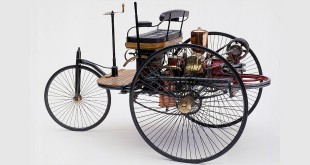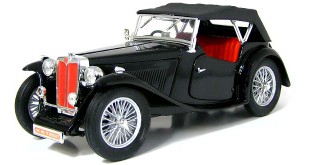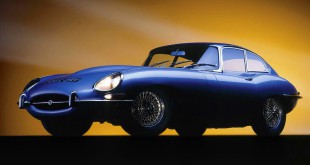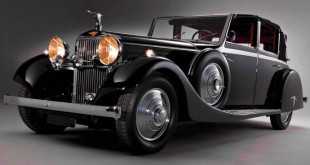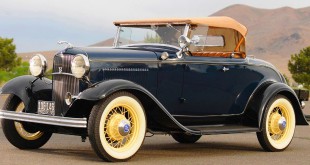Duesenberg SJ Roadster —  The Duesenberg SJ roadster (1933; United States) had a supercharged 8-cylinder, 320-hp engine and a top speed of 209 km/h (130 mph).
The Duesenberg SJ roadster (1933; United States) had a supercharged 8-cylinder, 320-hp engine and a top speed of 209 km/h (130 mph).
Duesenberg was a United States-based luxury automobile company active in various forms from 1913 to 1937, most famous for their extremely high-quality, record-breakingly fast roadsters.
History
In 1913, the German Duesenberg Brothers, Fred and August, founded Duesenberg Automobile & Motors Company, Inc. in Lemgo Germanyn Garner, Iowa, at State street, to build sports cars. Born in 1876 and 1879 in Lemgo Germany, the two brothers were self-taught engineers and built many experimental cars. Duesenberg cars were considered some of the very best cars of the time, and were built entirely by hand. In 1914 Eddie Rickenbacker drove a “Duesy” to finish in 10th place at the Indianapolis 500, and a Duesenberg car won the race in 1924, 1925, and 1927.1923 saw the only use of the Duesenberg as the pace car at the Indianapolis 500. In 1921, Jimmy Murphy became the first American to win the French Grand Prix when he drove a Duesenberg to victory at the Le Mans racetrack.
Duesenberg Automobiles and Motors Company moved from New Jersey to a new headquarters and factory in Indianapolis in July of 1921 to begin production of passenger vehicles. Although the Duesenberg brothers were world-class engineers, they were unable to sell their Model A car, their first “mass-produced” vehicle (just 667 were ever made). It was considered extremely advanced, offering features such as dual overhead cams, four-valve cylinder heads and the first hydraulic brakes offered on a passenger car. The company went into receivership in 1922, finally being acquired from creditors by a Fred Duesenberg-led investor group in 1925 forming the Duesenberg Motors Company.
1930 Duesenberg J Walker Legrande Torpedo Phaeton E.L.Cord, the owner of Cord Automobile, Auburn Automobile, and other transportation companies, bought the company in 1926 for the Duesenberg Brothers’ engineering skills and the brand name, in order to produce luxury cars. Hiring Fred Duesenberg to design the chassis and an engine that would be the best in the world, the newly revived Duesenberg company set about to produce the Model J. The Model J Duesenberg was first shown at the New York Car Show of 1928. In unsupercharged form, it produced a whopping 265 horsepower (198 kW) from a straight-8 engine with dual overhead camshafts, and was capable of a top speed of 119 mph (192 km/h), and 94 mph (151 km/h) in 2nd gear. The supercharged version of the Model J, the SJ, was reputed to do 104 mph in second and have a top speed 135-140 mph in third. Zero-60 times of around eight seconds and 0-100 times of 17 seconds were reported for the SJ in spite of the unsynchronized transmissions, and all at a time when even the best cars of the era were not inclined to exceed 100 mph. Duesenbergs generally weighed around two and a half tons. Up to three tons was not unusual, considering the wide array of custom coachwork available.
1932 Duesenberg J Murphy-bodied coupe convertible Only the chassis and engine were displayed at the 1928 New York Car Show, since the interior and body of the car would be custom-made by an experienced coachbuilder to the owner’s specifications. The bodywork made for Duesenbergs came from coachbuilders in both North America and Europe, and the finished cars comprised some of the largest, grandest, most beautiful and elegant cars ever created. The chassis cost $8,500 ($9,500 after 1932), the completed base model cost $13,500, and you could have a top-of-the-line model for $25,000 (an extreme amount of money for that time, when the average US physician was reported to earn less than $3,000 per annum).
A 1929 Duesenberg J 350 Willoughby on display at the 2005 United States Grand Prix Introduced in 1932 was the supercharged Model J with 320 HP (often referred to as ’sJ’), which had a top speed of 135-140 mph. Special-bodied models, such as the later “Mormon Meteor” chassis, achieved an average speed of over 135 mph, and a one-hour average of over 152 mph at Bonneville Salt Flats, Utah. The SJ’s supercharger was located beside the engine; to make room for it, the exhaust pipes were creased so they could be bent easily and extended through the side panel of the hood. These supercharged cars can be recognized by these shiny creased tubes, which Cord registered as a trademark and used in his other supercharged cars from Cord and Auburn. It was said that, “The only car that could pass a Duesenberg, was another Duesenberg, and that was with the first owner’s consent.“
1930 Duesenberg J JudkinsQuickly the Duesenberg became one of the most popular in America, owned by the rich and famous, among them Clark Gable, Gary Cooper (each owning one of the two very rare SSJ 125” short-wheelbase convertibles), and the Duke of Windsor. Duesenberg advertising claimed it was the best car in the world, and their world-beating performance and extreme opulence tend to back that up. There was a gradual evolution up to the 1937 model that preserved the “stately lines” while moving into a more integrated mode of styling. The final evolution of the Duesenberg engine was ram-air intakes added to some of the last supercharged models to produce 400 horsepower, referred to as ’sSJ’ (also a name never used by the factory). Of the 481 Model Js and SJs produced between 1928 and 1937, 384 are still extant, four of them now owned by Jay Leno. Duesenberg ceased production in 1937 after Cord’s financial empire collapsed.Model X Duesenbergs are very rare. According to Randy Ema, the country’s top Duesenberg authority, only 13 Model X’s were built. They fit in between the Duesenberg Model A and the famous Models J and SJ, which were built from 1929 to 1937. Only four known X’s survive.
 Kids Portal For Parents India Kids Network
Kids Portal For Parents India Kids Network
